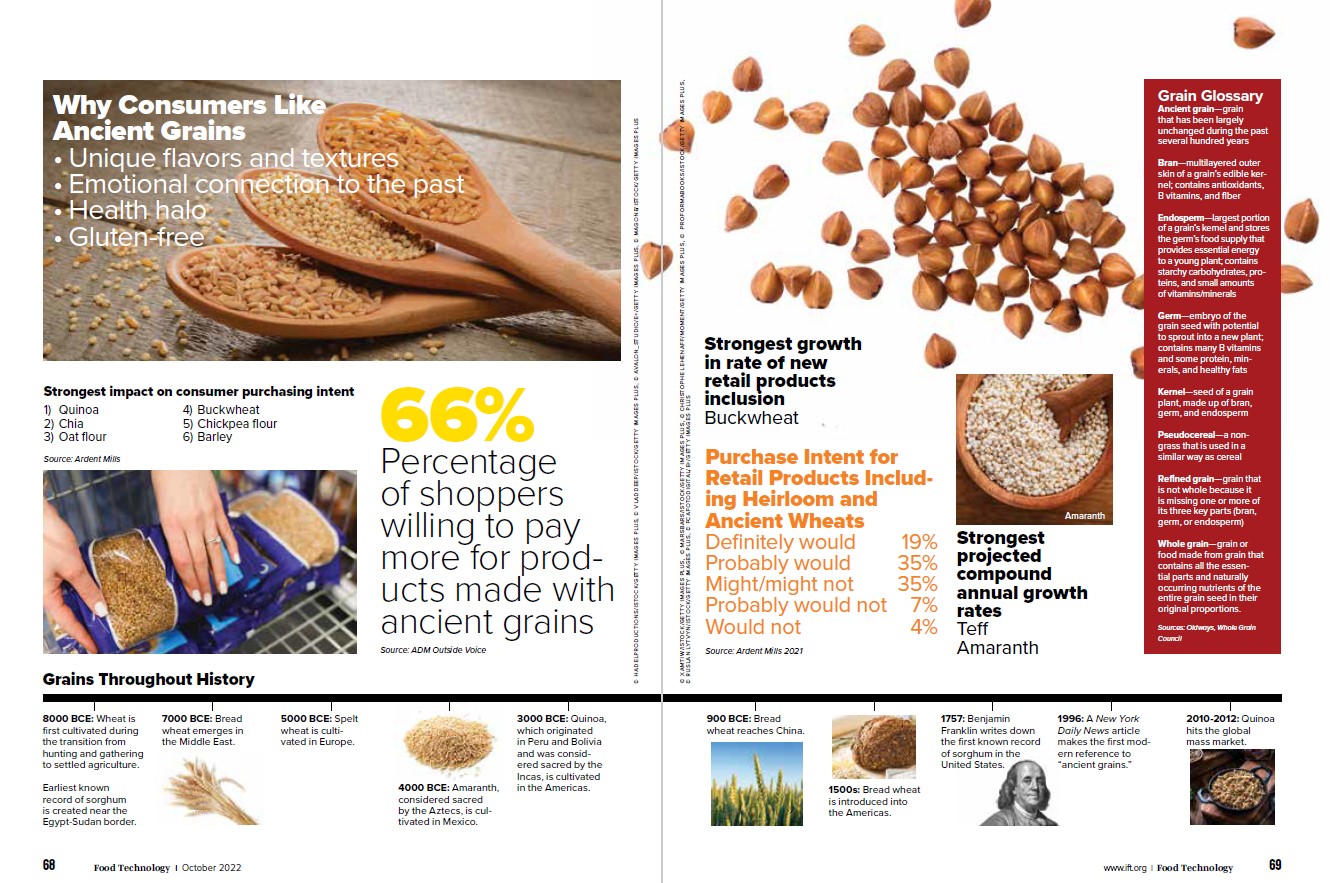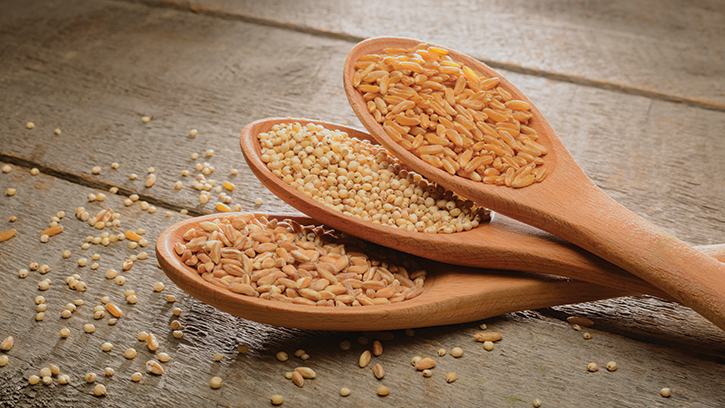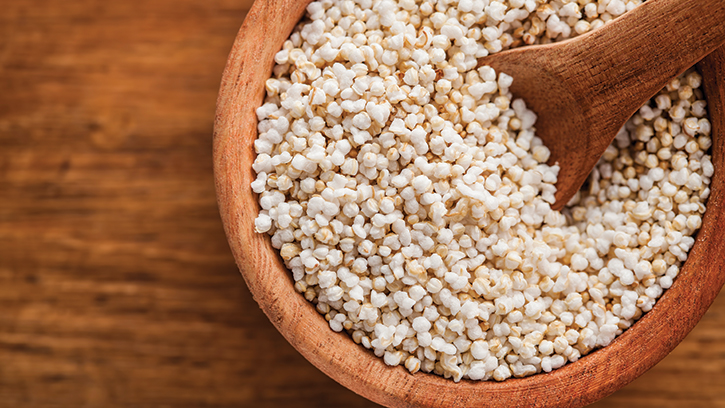A New Era for Ancient Grains
A visually oriented overview of ancient grain ingredient trends.


Everything old is new again in the ancient grains market, estimated at $457.35 million globally in 2022 and projected to expand at a compound annual growth rate (CAGR) of 35.5% to $6.3 billion by 2027, according to Market Data Forecast.
The grains’ long-term staying power is reflected in the ongoing growth of new product introductions containing ancient grains, says Keith Petrofsky, director of R&D, Customer Solutions & Product Development, Ardent Mills. These products have jumped from 0.5% to more than 3% since the late 1990s, led by foods made with quinoa.
“The gluten-free fad that took off about 10 years ago opened a lot of doors for some of these lesser-known ancient grains,” says Kelly LeBlanc, director of nutrition at Oldways, a nonprofit food and nutrition organization. “As a vocal minority of people were avoiding wheat, barley, and rye, food companies developed creative products featuring gluten-free ancient grains like quinoa, amaranth, millet, and sorghum.”
Today, health and nutrition are the top benefits that consumers associate with ancient grains, says Paula LaBine, marketing director, Milling & Baking Solutions, ADM.
What makes a grain ancient? Marketers have touted the term for everything from corn to wild rice, but the Whole Grains Council defines ancient grains as those that have been largely unchanged during the past several hundred years. That definition eliminates modern wheat but encompasses earlier wheat varieties like spelt and heirloom editions of common grains such as black barley.
Ancient grains are currently just a small piece of the overall grain market because most are grown in low quantities at higher expense, with their tough hulls requiring more pre-milling processing for a lower yield than hybrid wheat. But with two-thirds of shoppers ready to pay more for products made with ancient grains, according to ADM Outside Voice, the category is ripe for development.

Grain Glossary
Ancient grain—grain that has been largely unchanged during the past several hundred years
Bran—multilayered outer skin of a grain’s edible kernel; contains antioxidants, B vitamins, and fiber
Endosperm—largest portion of a grain’s kernel and stores the germ’s food supply that provides essential energy to a young plant; contains starchy carbohydrates, proteins, and small amounts of vitamins/minerals
Germ—embryo of the grain seed with potential to sprout into a new plant; contains many B vitamins and some protein, minerals, and healthy fats
Kernel—seed of a grain plant, made up of bran, germ, and endosperm
Pseudocereal—a nongrass that is used in a similar way as cereal
Refined grain—grain that is not whole because it is missing one or more of its three key parts (bran, germ, or endosperm)
Whole grain—grain or food made from grain that contains all the essential parts and naturally occurring nutrients of the entire grain seed in their original proportions.
Sources: Oldways, Whole Grain Council

Ancient Grains from A to Z
Amaranth—pseudocereal used as a grain
Black barley—heirloom grain
Black rice—heirloom variety of glutinous rice
Blue corn—heirloom grain
Buckwheat—pseudocereal used as a grain
Bulgur—dried cracked wheat
Chia—seeds of a flowering mint family plant
Chickpea—round yellowish legume
Einkorn—ancient Mediterranean wheat
Emmer—ancient Eurasian wheat
Farro—einkorn, spelt, or emmer wheat cooked as a whole wheat berry
Fonio—cultivated African grass
Freekeh—cereal food made from green durum wheat
Kamut—Khorasan wheat
Millet—small-seeded grasses
Quinoa—pseudocereal used as a grain
Red rice—heirloom grain
Sorghum—cereal grass
Spelt—ancient hulled wheat
Teff—seeds of an Ethiopian cereal grass
Wild rice—aquatic North American grass


